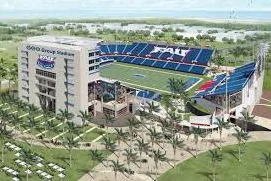How and Why is Full Sail University Graduation Rate So Low? 7 Key Reasons Explored
Discover the underlying factors contributing to the low graduation rate at Full Sail University. Uncover insights, statistics, and expert analysis in this comprehensive article addressing why the graduation rate is low and how it impacts students.
Full Sail University, renowned for its innovative programs in media, arts, and technology, often faces scrutiny over its graduation rates. Despite its stellar reputation in certain circles, questions persist about why its graduation rates fall below expectations. In this article, we delve deep into the reasons behind Full Sail University’s low graduation rates, shedding light on crucial aspects affecting student success and institutional outcomes.
Understanding the Challenges: Why is Full Sail University Graduation Rate So Low?
Lack of Comprehensive Support Systems
Navigating academic challenges can be daunting, especially for students transitioning to college life. Full Sail University’s low graduation rate may partially stem from insufficient support structures for students, both academically and emotionally. Without robust support systems in place, students may struggle to adapt and persist in their studies.
Full Sail University must prioritize the establishment of comprehensive support mechanisms to address students’ diverse needs, ensuring they receive the guidance and assistance necessary to thrive academically.
Rigorous Academic Demands and Intensive Programs
Full Sail University is renowned for its rigorous academic programs, designed to prepare students for dynamic careers in creative industries. However, these intensive programs can pose significant challenges, leading to attrition and low graduation rates.
The demanding nature of Full Sail’s curriculum, coupled with tight schedules and high workload expectations, may overwhelm some students, resulting in early departures or extended completion times. Efforts to strike a balance between academic rigor and student well-being are crucial in improving graduation rates.
Financial Barriers and Student Debt
Financial constraints represent a significant hurdle for many students pursuing higher education, including those enrolled at Full Sail University. With tuition costs on the rise and student debt reaching unprecedented levels, financial burdens can deter students from completing their degrees.
Addressing affordability issues through scholarships, grants, and financial aid programs can alleviate the financial strain on students, making education more accessible and reducing dropout rates.
Limited Flexibility in Program Structures
Full Sail University’s specialized programs are tailored to specific industries, offering hands-on training and experiential learning opportunities. While this focused approach fosters skill development, it may limit students’ flexibility in customizing their academic paths.
The lack of flexibility in program structures can be a barrier for students with diverse interests or changing career aspirations. By introducing more flexible course options and interdisciplinary opportunities, Full Sail can accommodate a broader range of student needs and preferences, ultimately enhancing graduation rates.
Transition Challenges for Non-Traditional Students
Full Sail University attracts a diverse student body, including non-traditional students seeking career advancement or skill enhancement. However, transitioning back to academia after a hiatus or pursuing education alongside other responsibilities can pose unique challenges.
Non-traditional students may struggle to balance their academic pursuits with work, family, or personal commitments, leading to higher attrition rates. Offering tailored support services and flexible scheduling options can empower non-traditional students to succeed in their educational endeavors.
Limited Retention Initiatives and Engagement Strategies
Sustaining student engagement and motivation throughout their academic journey is essential for improving graduation rates. However, Full Sail University may face challenges in implementing effective retention initiatives and engagement strategies.
Enhancing student involvement in campus activities, fostering a sense of belonging, and providing mentorship opportunities can bolster student retention and success. By prioritizing student engagement both inside and outside the classroom, Full Sail can cultivate a supportive learning environment conducive to academic achievement.
Impact of External Factors and Industry Dynamics
The media, arts, and technology industries are dynamic and ever-evolving, presenting both opportunities and challenges for Full Sail University and its students. External factors such as industry trends, job market demands, and technological advancements can influence students’ academic experiences and career trajectories.
Full Sail must adapt its programs and curricula to align with industry demands while equipping students with the skills and knowledge needed to thrive in competitive environments. By staying abreast of industry trends and fostering industry partnerships, Full Sail can enhance its graduates’ employability and long-term success.
Frequently Asked Questions (FAQs)
Why do some students struggle to graduate from Full Sail University? Some students may face challenges such as academic demands, financial constraints, or lack of support systems, which can impede their progress and lead to lower graduation rates.
Does Full Sail University offer financial aid options for students? Yes, Full Sail University provides various financial aid options, including scholarships, grants, and loans, to help students alleviate the financial burden associated with higher education.
How does Full Sail University support student success and retention? Full Sail University implements support mechanisms such as academic advising, tutoring services, and career counseling to enhance student success and retention rates.
Are Full Sail University’s programs flexible enough to accommodate diverse student needs? While Full Sail University’s programs offer specialized training, efforts are underway to introduce more flexibility and customization options to meet the diverse needs of students.
What steps is Full Sail University taking to improve graduation rates? Full Sail University is actively addressing factors contributing to low graduation rates through initiatives focused on academic support, financial assistance, and student engagement.
How do industry dynamics impact Full Sail University’s programs and curriculum? Full Sail University regularly evaluates industry trends and incorporates relevant updates into its programs to ensure graduates are well-prepared for evolving career opportunities.
Conclusion:
In conclusion, Full Sail University’s low graduation rate can be attributed to a combination of factors, including academic demands, financial barriers, and limited support structures. By addressing these challenges and implementing targeted interventions, Full Sail can enhance student success and improve graduation rates, ensuring a more positive educational experience for all.



